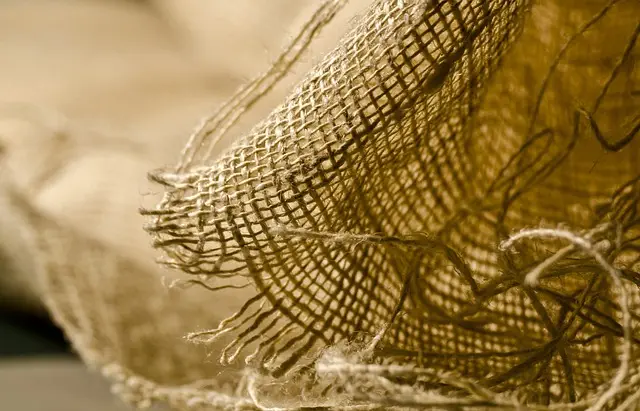Malaysian Kratom buds, from the mitragyna speciosa tree, are known for their traditional medicinal properties and are being explored for their role in pain management and injury prevention. These buds contain alkaloids like mitraphylline and 7-hydroxymitragynine, which have been linked to analgesic effects that can mitigate both acute and chronic pain, potentially reducing injury risk by lessening discomfort. The anti-inflammatory qualities of Kratom may also promote quicker recovery post-injury by diminishing swelling and inflammation. In the context of sports, these buds are being investigated for their ability to enhance athletes' resilience against strains and sprains, possibly due to their effects on muscle relaxation and pain relief. Additionally, Kratom's impact on mental focus and concentration is advantageous in sports that require high body awareness, which indirectly contributes to injury prevention by promoting safer performance of physical activities. The ongoing research into Malaysian Kratom buds suggests a multifaceted approach with promising benefits for injury management and prevention. It is important to integrate these buds as a complementary measure alongside professional medical guidance, sound training practices, and adequate rest, emphasizing a holistic approach. However, the use of Malaysian Kratom Buds should be approached with caution, considering individual health factors and potential interactions with other substances, as well as adhering to regulatory frameworks. A scientifically validated application of these buds in injury management protocols would necessitate further research to establish optimal dosages and long-term effects across various injury types. The article calls for a holistic, evidence-based approach using Malaysian Kratom Buds, merging traditional knowledge with contemporary science to explore their potential benefits in the field of injury prevention and recovery.
Exploring the multifaceted benefits of Malaysian Kratom Buds, this article delves into their potential role in injury prevention and management. With a focus on the unique properties of these botanicals, we examine how they can be integrated into effective strategies for safeguarding against injuries and managing post-injury recovery. By navigating through the science behind Malaysian Kratom Buds, readers will gain insights into their application in injury prevention and management protocols, offering a comprehensive approach to health and wellness. This exploration underscores the importance of natural remedies in modern medicine, providing a balanced perspective on the use of Malaysian Kratom Buds for injury care.
- Understanding Malaysian Kratom Buds and Their Role in Injury Prevention and Management
- Effective Strategies for Injury Prevention Utilizing Malaysian Kratom Buds
- Integrating Malaysian Kratom Buds into Injury Management Protocols: A Comprehensive Approach
Understanding Malaysian Kratom Buds and Their Role in Injury Prevention and Management

Malaysian kratom buds, sourced from the mitragyna speciosa tree native to Southeast Asia, have been traditionally used for their medicinal properties. These buds contain a unique blend of alkaloids, primarily mitraphylline and 7-hydroxymitragynine, which have been studied for their potential in pain management and injury prevention. The analgesic effects of Malaysian kratom are particularly noteworthy, as they can help alleviate acute and chronic pain, thereby reducing the risk of injuries aggravated by pain-induced movements. Additionally, its anti-inflammatory properties may aid in the recovery process post-injury by minimizing swelling and inflammation, which are often contributing factors to prolonged healing times. In the realm of sports injury prevention, Malaysian kratom buds have been explored for their role in enhancing athletes’ resilience against strains and sprains, potentially due to its impact on muscle relaxation and pain reduction. Furthermore, the buds’ ability to improve mental focus and concentration can be beneficial in activities that require heightened awareness of one’s body position and movements, thereby indirectly contributing to injury prevention by promoting safer execution of physical tasks. As a result, Malaysian kratom buds offer a multifaceted approach to injury management and prevention, with ongoing research continuing to shed light on their potential applications in this field.
Effective Strategies for Injury Prevention Utilizing Malaysian Kratom Buds

Integrating Malaysian Kratom buds into a comprehensive injury prevention and management regimen can offer significant benefits, particularly for those engaged in physically demanding activities or recovering from existing injuries. The primary active compounds found in these buds, mitragynine and 7-hydroxymitragynine, have been studied for their potential analgesic properties, which may help reduce the perception of pain and facilitate recovery processes. Additionally, regular consumption of Malaysian Kratom buds can contribute to enhanced stamina and energy levels, allowing individuals to engage in their activities with greater endurance and thus potentially reducing the risk of injury due to fatigue.
For injury prevention, it is recommended to use Malaysian Kratom buds as part of a balanced approach that includes proper warm-up exercises before physical exertion and adequate post-activity recovery periods. The anti-inflammatory effects associated with the alkaloids in Kratom may aid in muscle repair and recovery, potentially minimizing the likelihood of acute injuries. Moreover, the mood-enhancing qualities of these buds can improve mental focus, enabling individuals to maintain better form and technique during physical activities, which is crucial for preventing overuse injuries. It’s important to note that while Malaysian Kratom buds may play a role in injury prevention and management, they should be used responsibly and as part of an overall strategy that includes expert medical advice, proper training techniques, and restful sleep.
Integrating Malaysian Kratom Buds into Injury Management Protocols: A Comprehensive Approach

Incorporating Malaysian Kratom Buds into injury management protocols presents a multifaceted approach to recovery and prevention. Traditionally, these buds have been recognized in Southeast Asian cultures for their potential therapeutic properties, which may include analgesic effects that can aid in alleviating pain associated with injuries. The unique alkaloids found within Kratom, such as mitragynine and 7-hydroxymitragynine, are believed to interact with opioid receptors, offering a natural alternative for pain management without the high risk of dependency or side effects commonly associated with synthetic opioids. In this context, Malaysian Kratom Buds could be integrated into existing treatment plans to complement conventional therapies, potentially enhancing recovery times and reducing the need for potent pharmaceuticals.
Moreover, the anti-inflammatory properties of these buds may contribute to injury prevention by mitigating the chronic inflammation that can lead to degenerative conditions or exacerbate existing injuries. Research suggests that regular intake of Kratom may support the body’s natural healing processes and promote a state conducive to tissue repair. However, it is imperative for healthcare providers to approach this integrative therapy with caution, considering individual health profiles, potential drug interactions, and regulatory guidelines. A comprehensive protocol involving Malaysian Kratom Buds would necessitate rigorous scientific evaluation to establish safe and effective dosages, as well as long-term outcomes in various injury contexts. This holistic approach to injury management, combining traditional wisdom with modern scientific understanding, holds promise for those seeking alternative or complementary strategies in their healing journey.
In conclusion, the exploration of Malaysian Kratom Buds has unveiled their potential role in safeguarding against and managing injuries. The article has delved into the multifaceted benefits of integrating these buds into injury prevention strategies and management protocols, offering a holistic approach to health and well-being. By understanding the properties and applications of Malaysian Kratom Buds, healthcare providers can enhance their toolkit for pain management and promote healing. Future research is warranted to further elucidate the mechanisms behind these natural remedies and their efficacy in various injury contexts. With careful consideration and scientific investigation, Malaysian Kratom Buds may emerge as a valuable asset in the realm of injury care.






